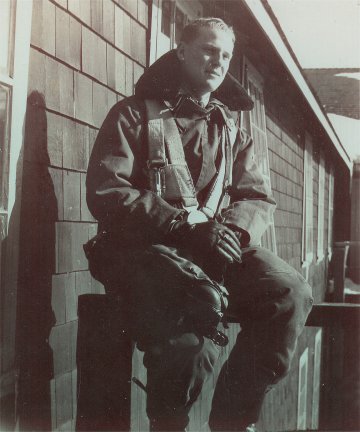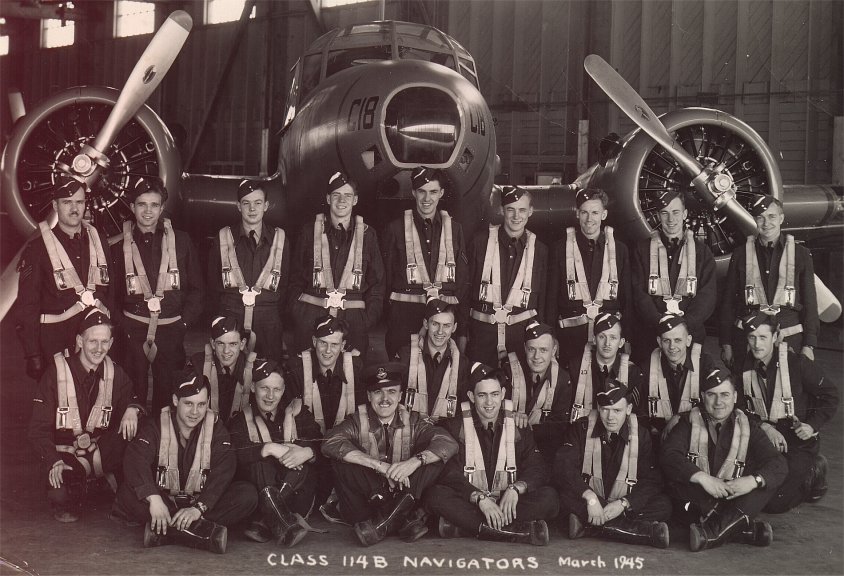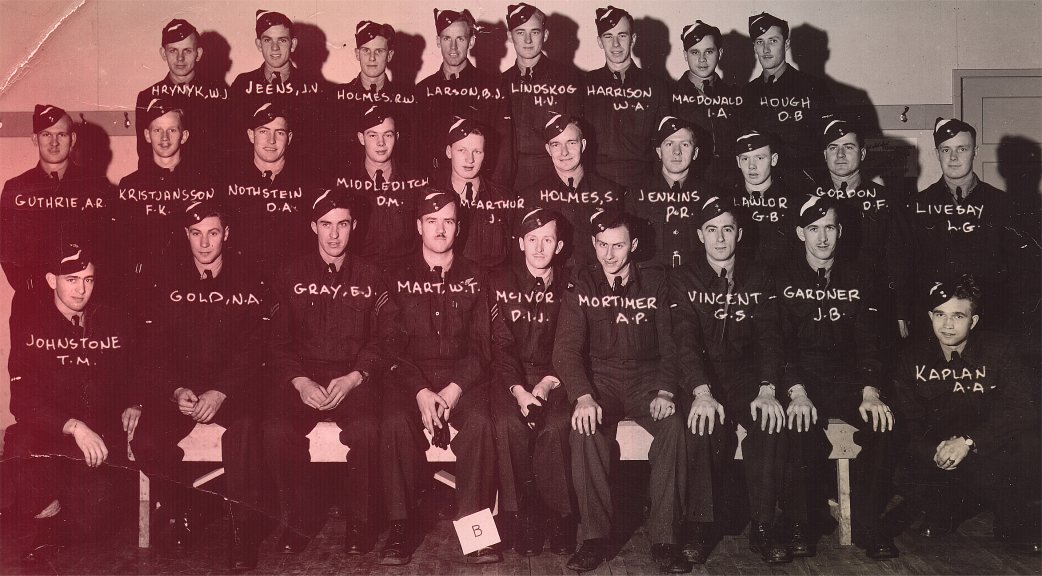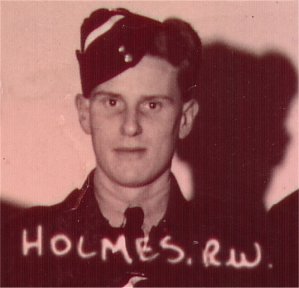Ronald Holmes 1813950 RAF
click for full screen images
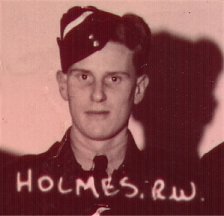 Most
18-year-olds during WWII were either called up to one of the services or
worked in a reserved occupation, however, you could volunteer for air crew
at 17 ¼ years. If accepted you were placed on deferred service to
be called up when you were a minimum of 18 years old. This I did and was
eventually called up on 15th Nov 1943.
Most
18-year-olds during WWII were either called up to one of the services or
worked in a reserved occupation, however, you could volunteer for air crew
at 17 ¼ years. If accepted you were placed on deferred service to
be called up when you were a minimum of 18 years old. This I did and was
eventually called up on 15th Nov 1943.
Until I was called up I was working as clerk and a member
of the ATC. As part of my training I did 12 hours flying in Tiger Moths
to see if I was suitable to be a pilot. I was considered not be suitable
for this role so consequently remustered to train as a Navigator.
As part of my training as a Navigator I was posted 5AOS Winnipeg.
The Journey to Canada
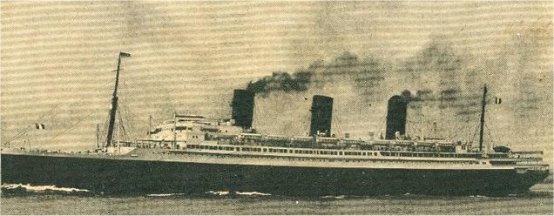
SS Ile de France
We left Gourock in the firth of Clyde on Board the SS
Ile De France on our way to Halifax. The trip took around seven days
to complete and during this time I helped out in the galley to help with
passing the time. We had no Naval Escort on our voyage and we sailed on
our own.
On arrival in Halifax we were given a meal great of Eggs
and Bacon which was a treat! We then travelled to the RAF Station at Moncton
in New Brunswick. We had a short stay there, and after this stay I was
posted to the 5AOS in Winnipeg along with others. We travelled there by
train. On the way we managed to spend a short time in Montreal. This was
the first time we had slept and eaten on a train. On arrival at Winnipeg
we were taken to the airport on the outskirts of the town. This was where
5AOS was based. We arrived on the 5th Nov 1944 and were shown to our billets.
These consisted of two-storey wooden buildings which had central heating!
This was completely new to us all and was a great benefit as it was the
middle of winter and very cold. You can see from the pictures the ground
was covered by thick snow.
The station was run by civilians and the only military
personnel on site were ourselves, who were being trained, RCAF Officers,
and one Officer from the RAF. The Military personnel were responsible for
training, discipline and issuing equipment and clothes, if and when needed.
We were paid RCAF rates of pay which were higher than those of the RAF.
The Canadian Government had made up the difference.
The Course
The following day we assembled in the main hall where
we were joined by members of the RCAF and RNAF, who with us made up the
whole course. We were then allocated flights in which we remained throughout
the course. My flight was 114b and you can see a picture of my Flight in
one of the photos. The majority on the course were Canadian trainees of
the RCAF. The Navigators course was of 20 weeks duration and was very intensive.
It consisted of Lectures, Ground Practical Work, Flying Exercises, and
we had also to reach and maintain a certain standard of fitness. The ground
work, apart from the physical training, consisted of lectures on Navigation,
recognition of weather patterns and learning Morse code, which we had to
able to send by Aldis Lamp or key. We also had to be very quick in Mental
Math, and aircraft recognition, and we also had to understand other aspects
of flying such as what was meant by airspeed, and ground speed etc. Our
class was under our instructor F/O J Seed, a member of the RCAF. There
is no doubt he was very good at his job. All the way through the course
we had tests with a major exam at 14 weeks. If you failed this exam you
were dismissed off the course and in the case of the RAF personnel sent
back to Moncton for return back to the UK for re-mustering.
A typical day started at 07:00 when we arose, washed and
dressed and went to the mess for breakfast, which was typically pancakes
with maple syrup or eggs. At 08:00 we went to our classroom for ground
work or if you were flying in the morning, you would go for a briefing
for your flight. The lectures or flying lasted till our break for lunch
around 12:30. After lunch, training carried on with lectures or flying
until approx. 17:00. In the evening we were either given work or, as it
was dark, we had night flying. Part of the evening work consisted of taking
star shots using a bubble sextant. Over the duration of the course a certain
number of star shots had to be taken from the ground.
Flying
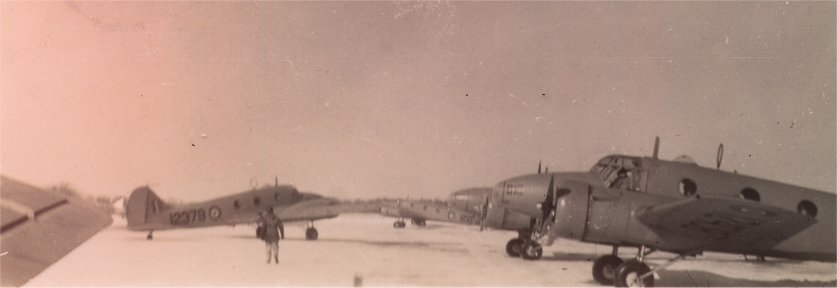
Ansons Parked
The aircraft used by 5AOS were Canadian-built
Avro Ansons which were flown by civilian pilots and radio operators.
The flying equipment we used included Sidcot suits, observer harness, and
Type C Helmets. These were provided by the BCATP and you can see me in
mine in the picture. The flying exercise usually lasted around three hours.
We did not have any radar to help us navigate and we had to use dead reckoning
along with star shots if the weather allowed. My recollection is that it
was very cold in the planes as there was very little heating. We did not
fly very high so did not require oxygen. My memories are that it was quite
difficult to see landmarks at the ground as it was covered snow and again
you can see this from the pictures. We normally flew in pairs, one responsible
for the charts and the other taking star shots or locating landmarks if
possible.
Communication in the aircraft whilst flying was either
done by talking or passing bits of paper around.
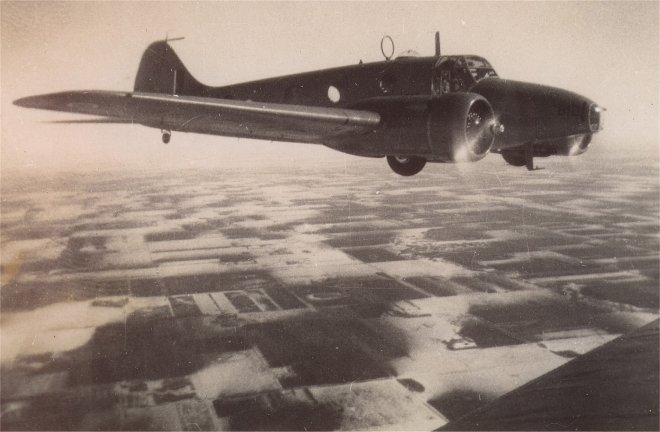
Anson Flying
The End of the course
Nearing the end of the course we sat the final exams
on groundwork plus the marks given for flying exercises and these combined
decided whether we could be awarded our Navigators brevets and promoted
to a Sergeant or Junior Officer. I passed the course and was promoted to
a Sergeant Navigator.
We had a passing out parade when the stripes and brevets
were presented by dignitaries. Mine were presented Billy Bishop, a WWI
ace. In the evening after the presentation we had a course dinner which
was enjoyed by us all and you can see this from the picture.
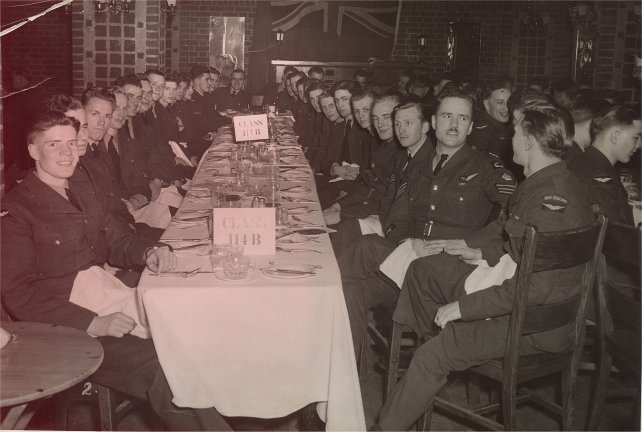
Last Meal
We were then given tickets to return to Moncton as quickly
as possible as there was a ship scheduled to leave Halifax for the UK in
the not-too-distant future. Unfortunately, we were not granted any leave
before our return trip.
The ship that we sailed back on was the SS
Aquitania. During the voyage the ship was very busy with troops
unlike the Ill de France on my outward voyage which was nearly empty. Again
we sailed alone without an escort, reaching the UK in April 1945.
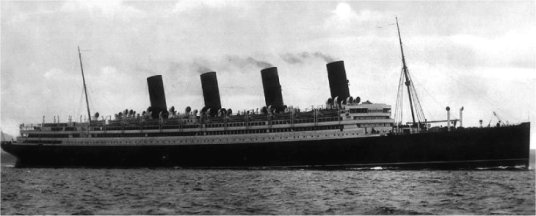
SS
Aquitania
General Comments
We did have some leisure time whilst at the 5AOS and
we went by street car to Winnipeg. In Winnipeg there was a club especially
for Air Force members to which we used to go sometimes. One member of our
flight (Tommy Johnstone) lived in Winnipeg with his family and he used
to take two of us (of which I was one) regularly to his home and his parents
made us very welcome. They were very hospitable, as were all the members
of the public we met. We had food, both on the camp and out, in Winnipeg
the like of which we did not see in the UK because of the rationing in
the back there. The shops were full of goods which we hardly had seen since
the outbreak of the war. I must say I enjoyed my stay in Canada, but naturally
I was glad to return back to the UK.
The UK
When I returned the UK WWII was nearly over and I was
stationed at a number of stations including RAF Locking and RAF Metherington,
performing various duties. From October 1945 until May 1947 I was stationed
at RAF Mildenhall until my discharge in late 1947.
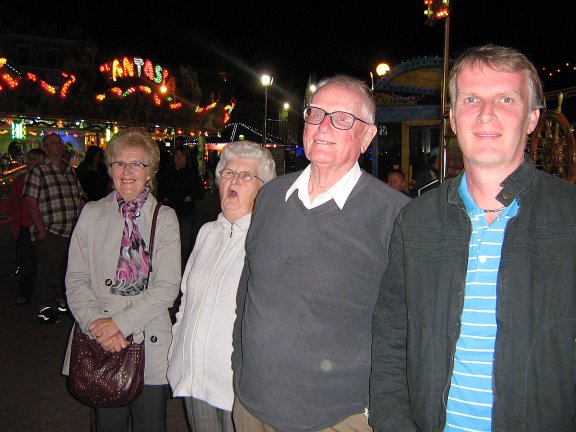
Ron Holmes today ~ with wife and son
I am now 84 years old and will be 85 this year (2010)
and still enjoy life to the full. I have been married over 50 years and
have two sons and two grandchildren. I have enclosed a picture to let you
know what I look like now. My wife is to my right and my son
Mike whom has put this all together is on my left.







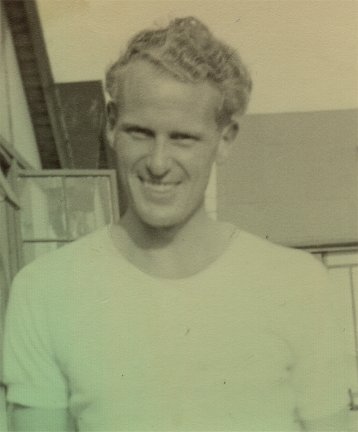 .
. . .
.
. . .